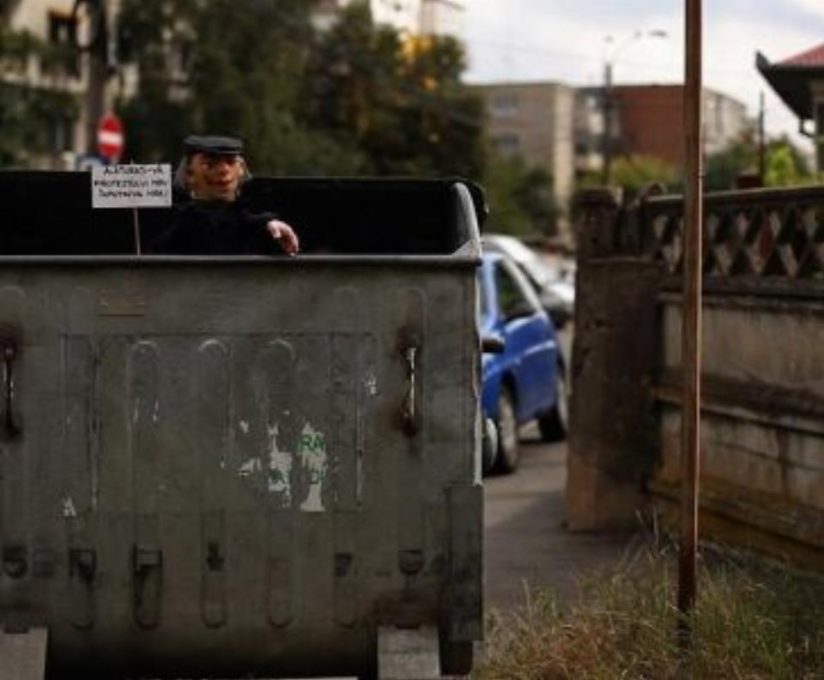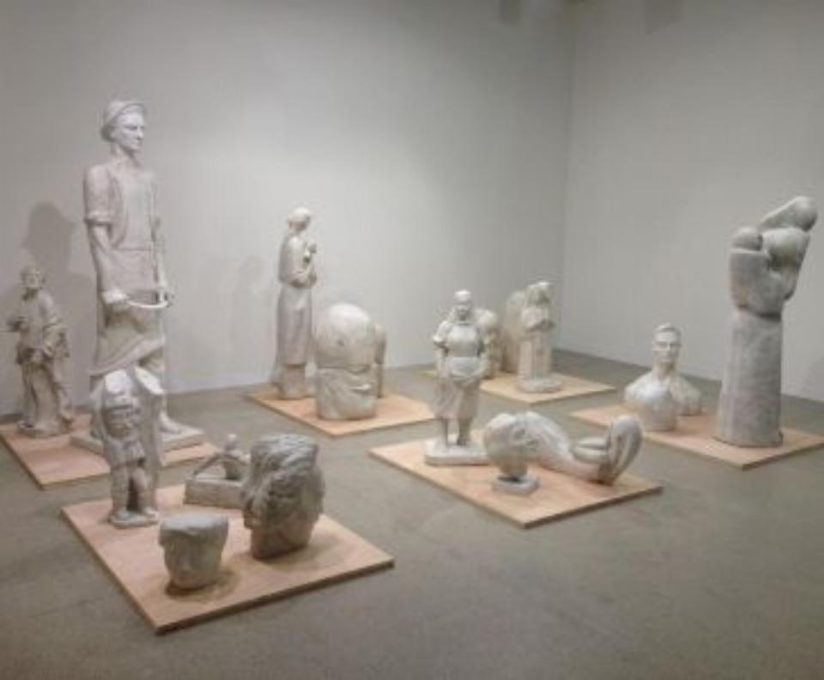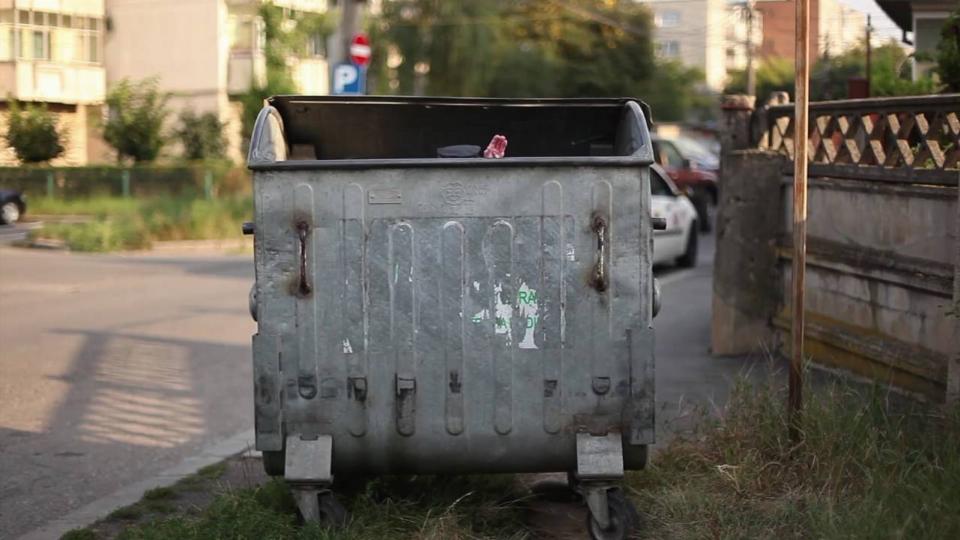CIPRIAN MUREŞAN. Of Puppets and Humans
An exhibition organized as part of the festival Rise of Eastern Culture / Another Dimension
An unfinished story about heroes and losers
“…how closely love and hatred are interwoven” (Auto-Da-Fé)
The exhibition Of Puppets and Humans follows the major themes approached by Ciprian Mureșan in the last years while discussing what may be seen as a dystopian story about the fuzzy margins of heroes and losers. The main narratives connecting the selected works follow a path from the more or less hidden injustices that one can trace in any given historical account, to the personal riots against the power hierarchies dictating how tomorrow will look like and to whom failure and success is attributed to. The characters appearing in Mureșan’s works – humans or metaphorical representations of those – are lonely characters, most of the time caught up in the trap of their bad decisions, unsuitable to the world they live in, at the verge of falling in the holes of history. Such holes are silently persisting in the background of many of the artist’s inquiries into the taboo subjects or unspoken realities pertaining to an unnecessary glorified past and a corrupt present.
The unspoken is not only a fact observed by Mureșan, but rather it is reenacted every time by a deliberate artistic choice to disrupt the expectations of the viewer. The visual conventions are sometimes twisted to subversive hints that turn the visible into invisible and the veiled clues into an unexpected force. The silent stories meet the loud voices that burst out from human discontent, converging in a rather paradoxical story about the absurd entanglements of leadership and hegemony.
The work Dead Weights (2012-2014) is a reminder that what you see is not always the whole picture and it takes a thorough process of exploring the “backstage” of every historical narrative in order to understand the present. Dog Luv (2009) is grasping the aggressive human nature and the fantasies of leadership that in any moment can turn one’s power into vulnerability. I’m protesting against myself (co-authored by Gianina Cărbunariu, 2011) addresses the impulse of rebelling against almost anything, a desperate solitary outburst of emotional resolutions. Untitled (2015) opens up a poetic passage from childhood rhetoric to adult stereotypes and vice versa. And finally Auto-Da-Fé (2008) gives a public voice to a rather doubtful and isolated literary character, testing his statements into the open space of the city.
The title of the exhibition comes from the homonymic title of the book edited by Romanian art historian Alina Șerban and published in 2015, a book that concentrates on the artist’s theater works turned into videos. As the author states: “The silent paradox of the dual projection of art into theater and vice versa resides, in Ciprian Mureșan’s case in the transformation of this intention into a type of anti-practice that liberates the viewer, the artist, and the playwright from the conventions of the two media, from comfort and family zones, in order instead to consolidate the role of subjectivity.” If we were to fallow this interpretation, we will have to note that this subjectivity comprises such an array of convergent forces referencing so many different symbolic and visual repertoires, that the overlapping of those and the palimpsest resulting might be the actual core of Ciprian Mureșan’s work.
Mureșan’s collaboration with theater people is a long term practice and one of the first such experiments took place in 2009, during a tandem workshop organized by Temps D’Images Cluj in order to bring together visual arts and theater. The boundaries of disciplines were tested together with dancer and choreographer Mădălina Dan in a performance on memory and oblivion, having as a subject the personality of the almost forgotten actor and writer Dominic Stanca. The ephemeral nature of the performance was once again emphasized by the repeated gestures made by the two while being dressed in yellow coats – erasing the text on a wall while a video projection, another ghostly medium, kept the original writing going on and on. Another action put together by Ciprian Muresan in collaboration with two theater directors is the double performance Untitled (2012), where he asked each director to stage a play and to perform them at the same time, overlapping the two different representations.
The videos presented in the exhibition, Dog Luv, I’m protesting against myselfand Untitled 2015 can be read in this context since they are all based on live performances staged by the artist in close connection with specificities of the theater repertoire, even if sometimes they are actually used as transgressive boundaries. While Dog Luv and I’m protesting… were publicly presented as filmed puppet shows, Untitled 2015 had two parallel dimensions – both as a live show and as a video of its own. What all three works have in common is not only the theater structure and the use of puppets as a means of interpreting a story, but also, coming back to the subject of heroic characters, the impossibility of these characters to take their actions further, to somehow accomplish the full potential of their agency. The catalyzing force that seems to define them is in all three cases arrested by a deep vulnerability that creates a rupture in the narrative coherence. Mad Dog is losing his strength as a leader; the human-like-figure of the puppet protesting is hiding in a garbage can; while the dolls reenacting children’s speech are distracted by the real life around them.
Dog Luv, first presented at the Romanian Pavilion of the Venice Biennale of 2009, is based on the text written by Saviana Stănescu, which develops around the theme of human violence, and later is integrated in the behavior of the puppet-dogs, becoming a fascination towards cruel acts and torture. The dogs are in first stance critical about it, but slowly incorporating it and reenacting the violent acts between themselves. Thus, the situation created discusses both the group dynamics and the struggle for power that is never fixed. One’s role as a victim can very quickly turn into the one of a torturer. These shifts are suggested also by the melting of the foreground into the background and both in the darkness of the whole framework. Mureșan tried to cover everything in black – which is usually used for the dressing of the puppeteers to dissolve in the background and to give the stage to the puppets – so as the perceptual hierarchy vanishes. The puppets and the humans are simultaneously playing, making visible a casing that is usually hidden, so that the conventions of the puppet theater are brought forward as a subject as well.
I’m Protesting Against Myself, written and co-authored by Gianina Cărbunariu, is played by a puppet that yells his discontents from a garbage can, standing as an improvised scene. The inventory of reasons for creating a riot has a very powerful crescendo that catches the attention of the viewers and makes them aware of a whole network of personal compromises, excuses, silences, and falsities that we use in our everyday role-playing. These masks continue to be an important presence in Untitled 2015, which started as a workshop with kindergarten children. The recordings of their interaction with small sized and neutral puppets are transformed into a script that afterwards is played by actors dressed like the neutral puppets while manipulating childlike puppets. Based on elliptic sentences and hesitations, the whole play is an anti-narrative composition bringing forth fragments of fairytales and fantasies that we recall uneasily, when in fact adults contributed to them just as much as a child’s imagination. The desires, the projections or the perception of reality are in no way neutral, as the initial dolls would suggest. And as the play unfolds, more connections are being set between the apparent freedom of improvisation given to children and the regulated world in which they are transposed by the actors.
The different stages that these works pass through – from a play to a video work (as curator Oana Tănase synthesizes it in the title of a recent exhibition on Mureșan’s video works, “script, stage, screen”) – is not a process of “translation” from one medium to another, but a new visual inventory and conceptual language every time, adding new meanings and interpretations.
Dead Weights is a two chapter project, unfolding as a sequence of investigations on art historical hierarchies, and by contrast on the fragility of the silent – or as the title suggest, dead – artworks. The strategy of undermining a discourse by successive reproductions is a recurrent theme of Mureșan’s works, by way of referencing the debates around original and copy as well. The first stage of this work was exhibited at the Museum of Art in Cluj in 2012, where the artist used original sculptures chosen from the storage of the museum as weight for flattening the drying prints depicting the story The Invisible Clerk by Ilf and Petrov. The choice of this story is very significant because of its plot: a small community in Soviet Russia decides to build a big statue for Timiriazev, who was thought by the town committee to be a revolutionary hero. A spectacular equestrian statue is commissioned, but shortly after the monument is completed, it is discovered that Timiriazev was actually a botanist and a science man. As a result, the sculptor had to replace the sword in his hand with a beet and his helmet with an academic cap. Finally, the sculpture proved to be a droll combination between the heroic posture and the civilian profession of Timiriazev. Every paper with an illustration of this story was placed under the weight of the sculptures, making them invisible to the audience. The sculptures were part of the museum collection, but kept in the storage, like many works of art are. Using them as weight, the artist was also giving them a second life in terms of visibility and public acknowledgement.
After the show at the Art Museum in Cluj, copies of the original sculptures were exhibited at Art Basel as part of the Art Feature section. The work was purchased by a collector, who in turn decided to donate it to the Museum of Art in Cluj, from whose storage the original sculptures were chosen. Thus a series of situations encompassing the major entities of the contemporary art scene – the museum, the exhibition, the art-fair, the private collection and then back to the public collection of the museum – were entangled, tracing a circular movement that brings us back to the reflections of the artist on what and why is being excluded while something else is being included. The artist is having a gentle look on all these issues, not an incriminating one, while being aware of the historical injustices that the art world is dealing with.
Appropriating a fragment of the famous text by Elias Canetti, the work Auto-Da-Fé is a reminder of the thin line between good and evil when it comes to protecting one’s beliefs. The text becomes more powerful and critical once transposed by Mureșan with the help of graffiti artists on the walls around the city, completely changing its initial meaning and turning it into a manifesto of the invisible people. The subversive quality of this manifesto resides in its capacity to take over the city in a poetic and gentle act of awareness built-up from sentence to sentence.
Of Puppets and Humans orchestrates the different voices and instruments that Ciprian Mureșan has been using in his practice giving shape to a story about power, authority, history, transition, alienation, injustices, and, not least, the duality of heroes and losers that keeps hunting us.
Diana Marincu

PLAN YOUR VISIT
Opening times:
Thuesday – Sunday
10:00-18:00
Last admission
to exhibition is at:
17.30


